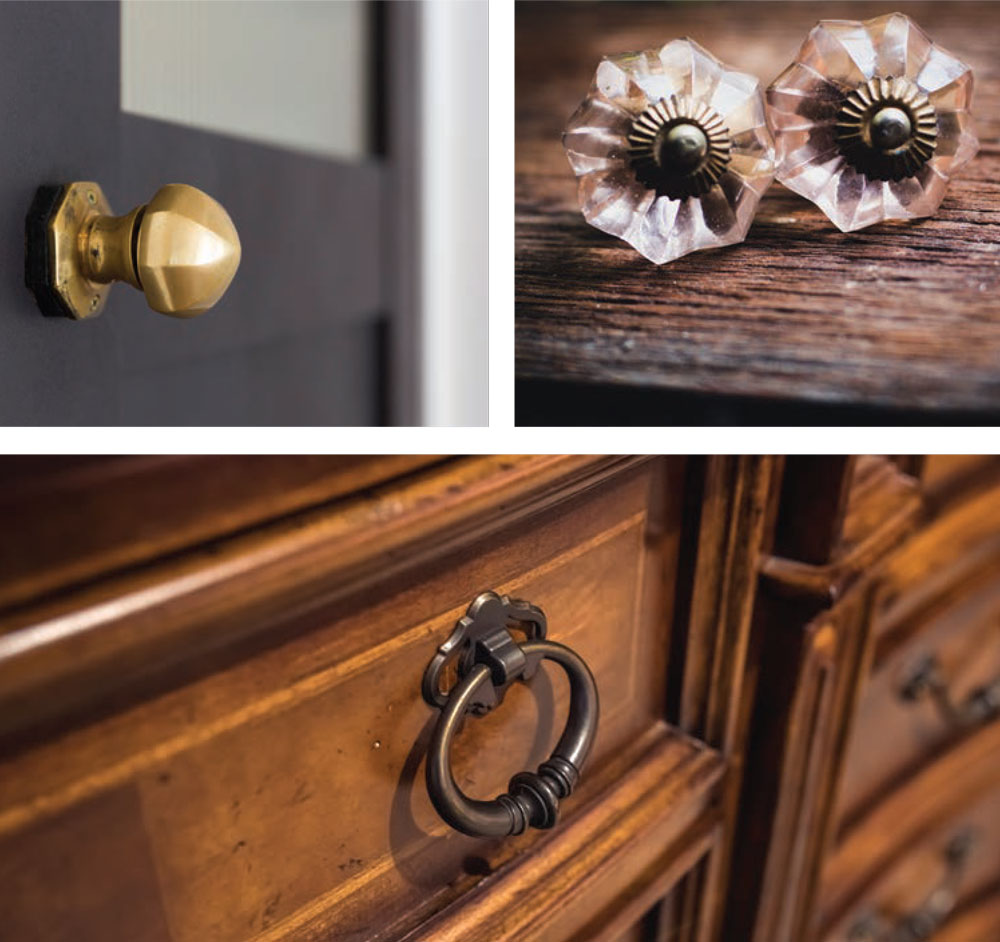Passed Down | How to Incorporate Nostalgic Items into Your Home’s Present-day Style
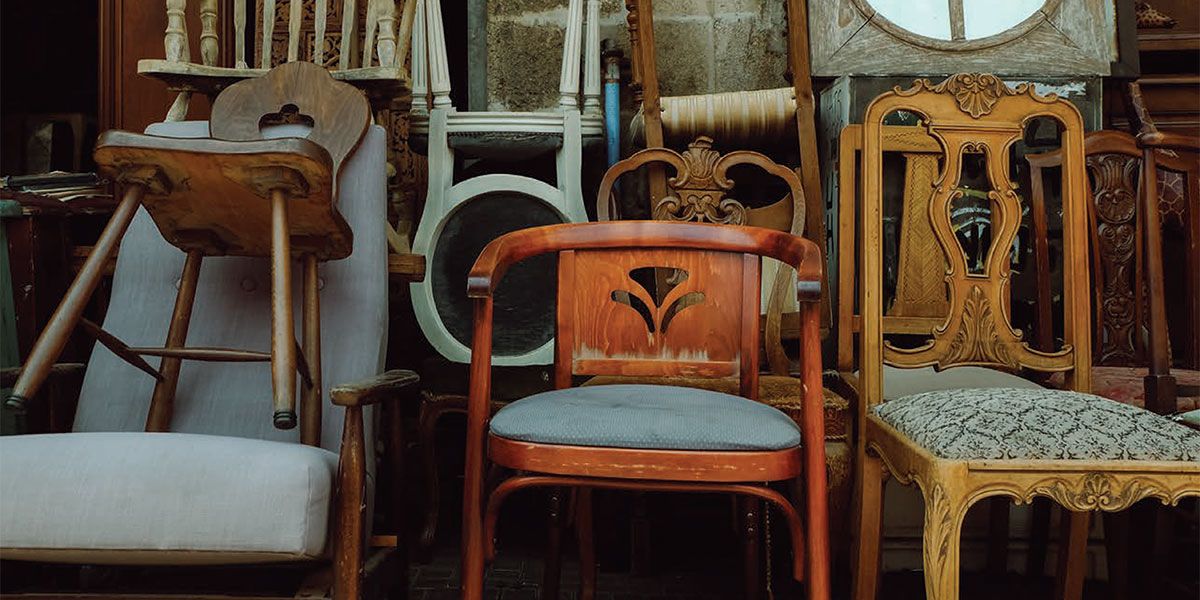
If you’re like me, any time an antique is up for grabs, I’m the first one in line. One of my favorite family heirlooms is my great-aunt’s hope chest that was manufactured at Lane Furniture in Altavista. We use it for blanket storage in our living room.
While this antique transitioned seamlessly into my home, I’ve had other treasured items sit for years in the attic, simply because I didn’t know how to make them work in my space.
Interior designers encounter this challenge often. Read on for a few tips and tricks from some local experts.
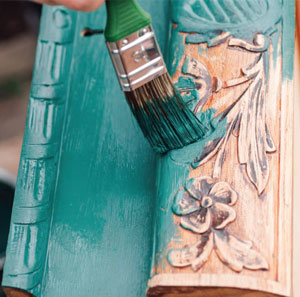 Tip #1: Don’t be afraid to update or change an antique.
Tip #1: Don’t be afraid to update or change an antique.
Some vintage items, specifically furniture, may be overdue for a little TLC.
“Painting an old childhood dresser won’t change the associated memory, but it can definitely breathe new life into the piece, flowing better with your overall aesthetic,” said Agatha Jobling of Agatha Interiors in Forest.
For example, Jobling adored a walnut console table that once belonged to her grandparents. While she didn’t paint it, she did make some other alterations so that it blended into her living room. 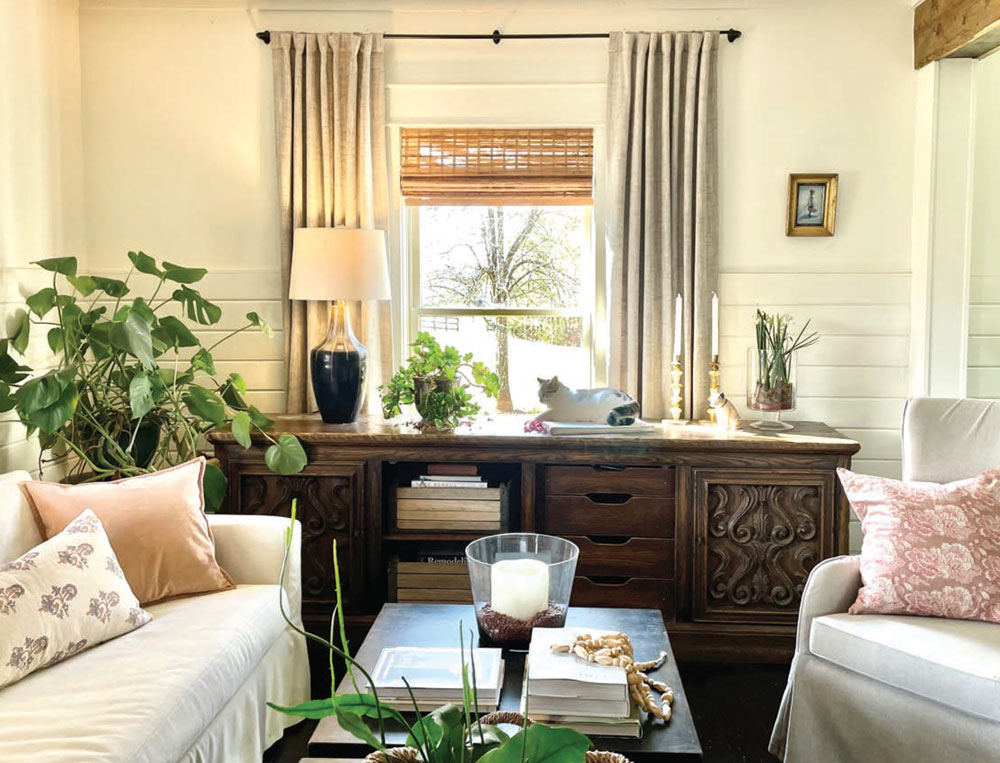 Photo: Agatha Interiors
Photo: Agatha Interiors
“It was visually quite heavy with its four matching wooden doors. To break up the monotony, I removed the two central doors, which uncovered shelves on one side and inset drawers on the other,” she explained. “I slid two old milk crates onto the shelves, which provides an interesting contrast of textures.”
When working with clients, Jude Rodriguez, junior interior designer at Curtains, Blinds & Bath in Forest, agrees that their favorite way to incorporate antique furniture into designs is to refinish the piece, either by painting or staining.
“This keeps the bones and history of the pieces while bringing them to the modern day,” he said. “Adding new hardware, like knobs or pulls, can also really elevate a vintage piece of furniture.”
For darker furniture, he recommends a lighter brass or silver hardware. On the contrary, lighter-colored antique furniture can get a modern facelift by adding matte black knobs or pulls.
Whichever direction you go, remember to remove the furniture’s original hardware first before ordering a replacement. The old hardware may leave behind marks or discoloration, and you’ll want to make sure your new hardware can cover up any imperfections.
Bonus Tip: Your grandparents’ big bulky dresser with an attached mirror may hold some sentimental value, but it can also overwhelm your bedroom. Rodriquez suggests removing the mirror from the piece and pairing a contemporary metal mirror with the dresser. The dresser mirror could find a home somewhere else, such as a bathroom or entry hall.
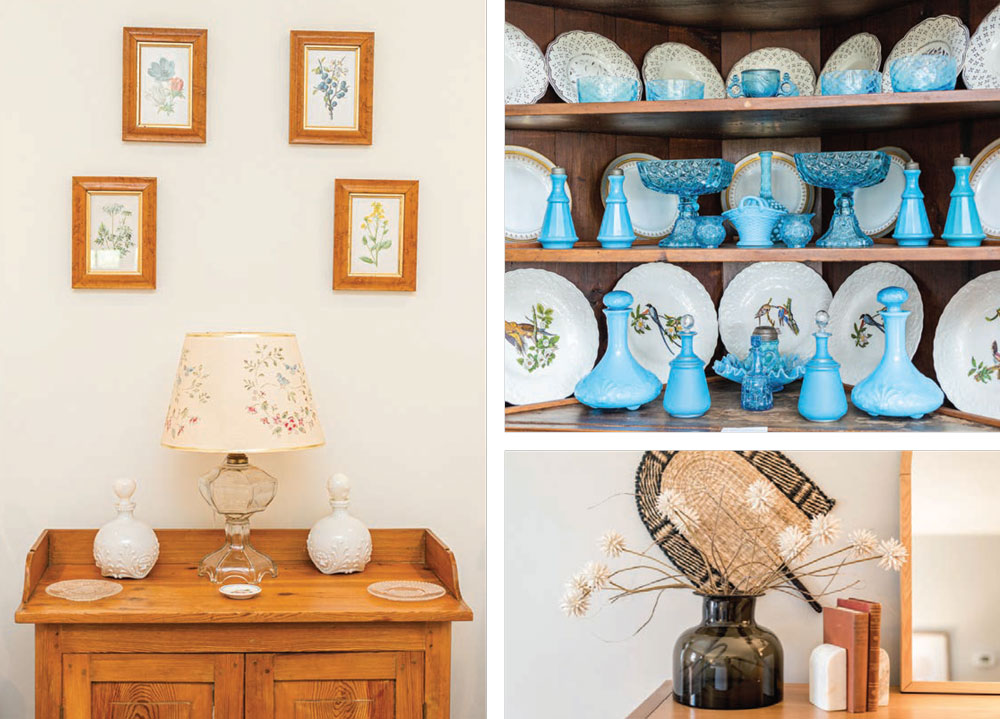 Photo: Curtains, Blinds & Bath
Photo: Curtains, Blinds & Bath
Tip #2: Displaying an entire collection isn’t always necessary (or practical).
Gone are the days where it’s expected that every single piece of your great-grandmother’s fine china has to sit crammed into a glass-doored hutch.
“There is no need to take up a whole wall to remember Aunt Betty,” said Jobling. “Instead of keeping the entire set that will likely never be used, why not hang a few of the plates to create a small gallery?”
Other ideas for dinnerware sets include using teacups as mini herb planters or saucers as soap dishes or bedside trinket trays.
Ashley Hilbish, principal interior designer at Curtains, Blinds, & Bath, recalls clients who wanted to display a lot of unique family memorabilia from Egypt and Spain. Her team dispersed this collection of items throughout the house, pairing them with newer items.
“We put them next to newer vases that gave the same vibe. The couple had a nice book collection, and we mixed some items in with the books,” she said. “That way each item had its own moment versus getting lost in a sea of collectibles.”
Bonus Tip: When a client asked Rodriguez to help with a photo collection that dated back to the 1800s, his team created a gallery wall, but they had the photos resized and recolored. This gave the wall a more uniform, modern look and also allowed the client to preserve the original copies safely.
Tip #3: Embrace unique ways to mix the old with new.“
Mixing vintage pieces with modern design elements can create an eclectic, lived-in feeling at your home,” said Rodriguez.
This has become a big trend in kitchen design, according to Hilbish, who has recently seen an old secretary incorporated into cabinetry and an antique table serving as a countertop base.
Rodriguez simply likes the idea of thinking outside the box with everyday antiques: using an old stool as a side table or an old trunk as a coffee table.
“It’s creating a new life for the piece in maybe a way that wasn’t originally intended,” he said.
In her own home, Jobling uses an antique sterling silver ice bucket that was passed down to her from a loved one as a planter for one of her large succulents.
“I’ve left it unpolished, as I prefer the patina it has developed over time,” she said.
Bonus Tip: Not all nostalgic items are necessarily antiques. Years before Jobling’s husband met her, he found a rock in the shape of a heart and carried it in his pocket, intending to give it to his “special future someone.” She mounted the rock inside a framed shadow box in their bedroom. ✦
Antique, collectibles, dinnerware sets, family memorabilia, Heirlooms, nostalgic, sentimental value, update, vintage pieces
